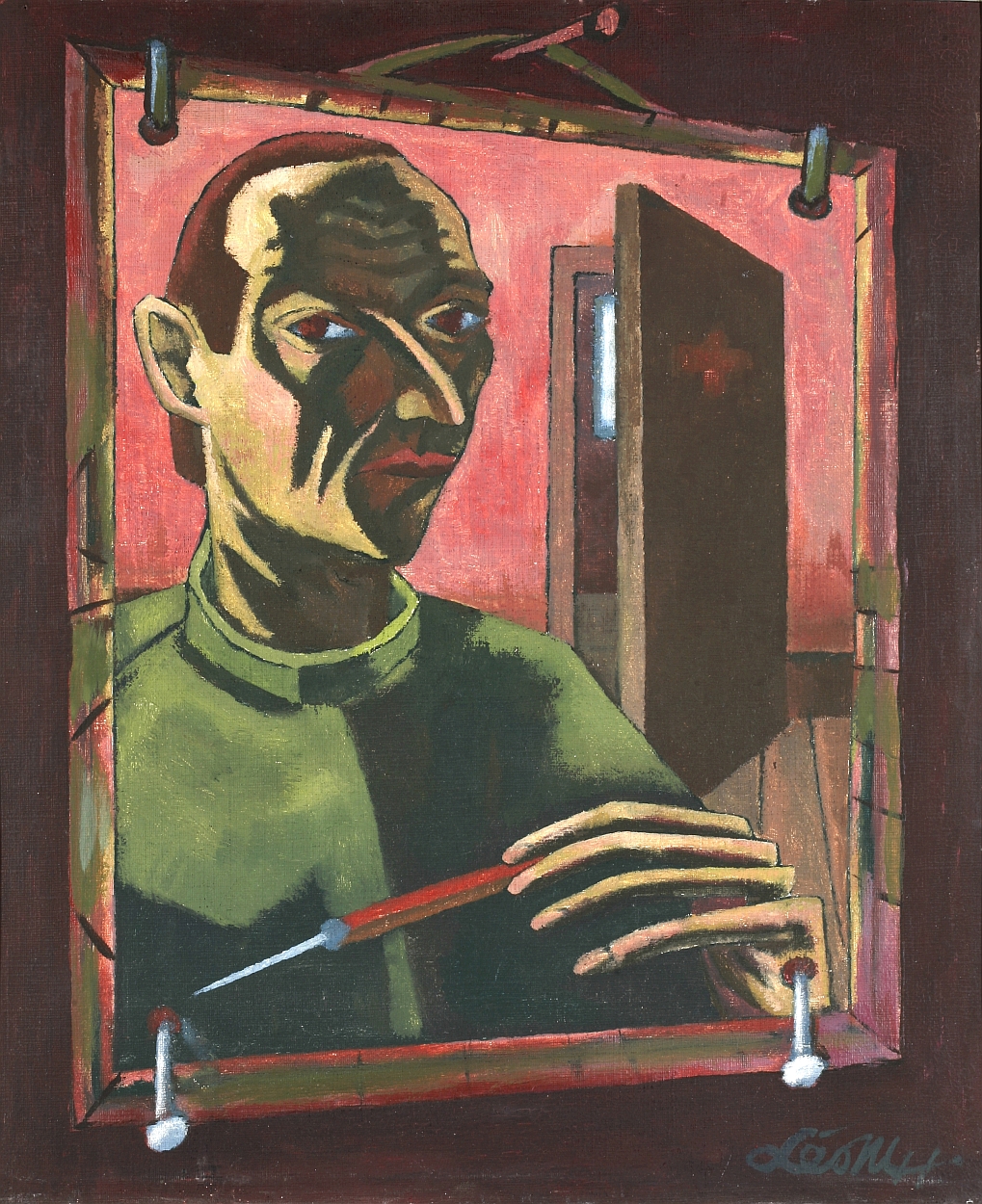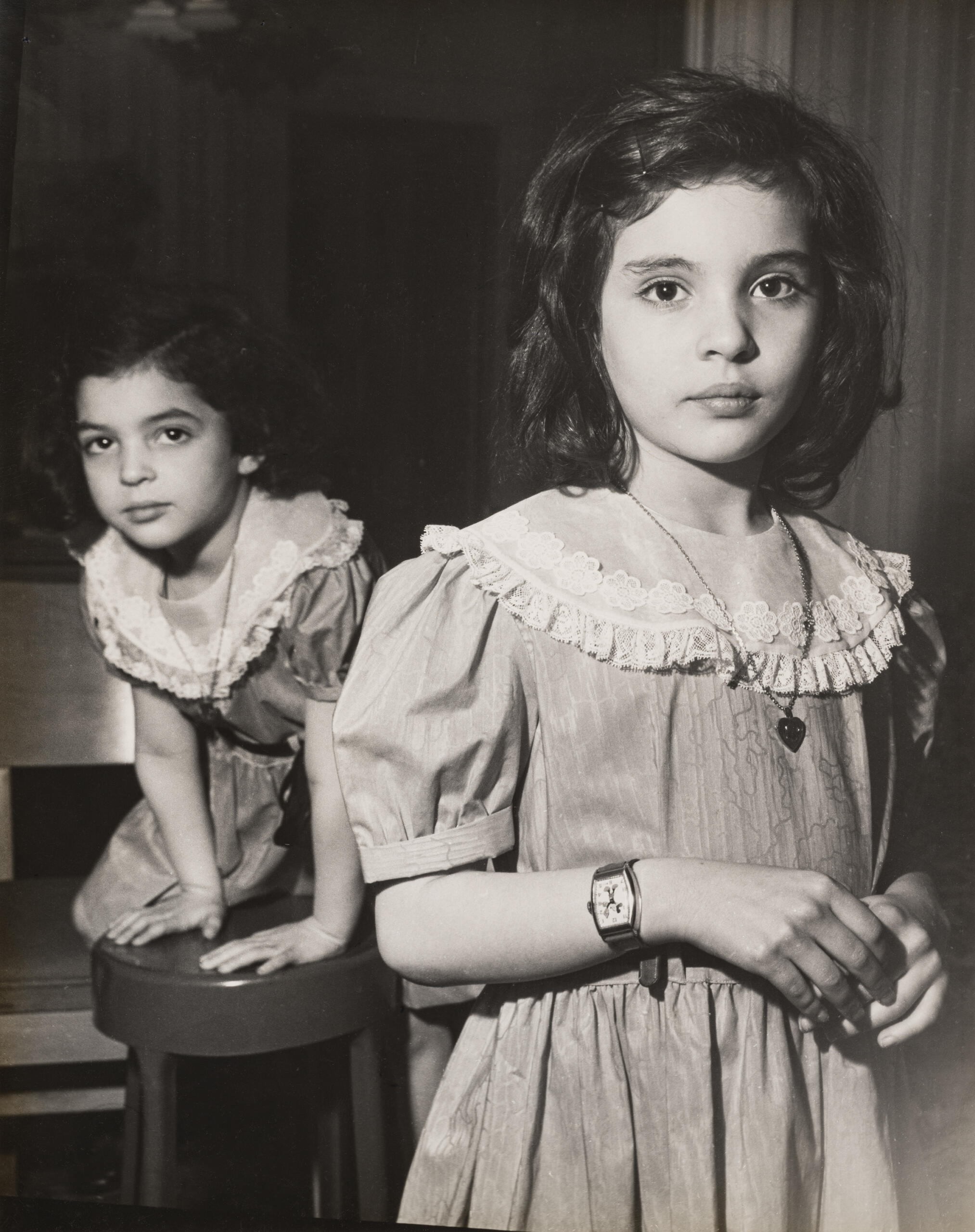Lectures
The Return from the Other Planet, 2023
Screening followed by Q+A with director Assaf Lapid
Marlene Meyerson JCC Manhattan, New York
Marlene Meyerson JCC Manhattan
334 Amsterdam Ave, New York, NY, United States
Ka.tzetnik, the Holocaust author who sold millions of copies and shaped its memory in Israel, was and remains an enigma. He remained elusive as rumors spread, claiming that he wrote all night long, in complete solitude, wearing his prisoner uniform from Auschwitz and burning his manuscripts by morning. During the explosive Eichmann trial, Ka.tzetnik was forced to reveal his identity to the public as he was summoned to testify. In a short testimony of a few minutes, he coined the term "The Other Planet" in describing Auschwitz, and fainted. The film explores the Ka.tzetnik enigma, shedding light on the person behind the myth, and brings back a chapter in his life that wasn't discussed much—his personal odyssey in coping [...]
Plunderer. The Life and Time of a Nazi Art Thief
Screening followed by Q+A with producer John Friedman
Marlene Meyerson JCC Manhattan, New York
Marlene Meyerson JCC Manhattan
334 Amsterdam Ave, New York, NY, United States
Hermann Goering’s art dealer, Bruno Lohse, prospered by selling stolen art for decades after WWII, while Jewish families struggled to regain their paintings and memories. Captured and interrogated by the Monuments Men after the war, he served a brief prison sentence. After his release, he dealt profitably in stolen art for sixty years after the war, selling to collectors, galleries, and major museums. Highlighting stories of Holocaust survivors working to reclaim their families' lost artworks, Plunderer reveals the failures of post-war justice and the continuing complicity of governments and the art trade. Screening followed by Q+A with producer John Friedman. In partnership with The Fritz Ascher Society for Persecuted, Ostracized and Banned Art. Director: Hugo Macgregor Year: 2024 Runtime: 115 [...]
Signs and Wonders. Author Melvin Jules Bukiet in Conversation with Artist David Stern
ONLINE VA, United StatesThis presentation starts with Bukiet reading an excerpt from a novel he is currently working on, followed by an inspiring discussion with Stern about the daily reality and nature of being a writer. They continue with a broader conversation about the arts and their relationship to reality. As they delve into his books, they explore the direct or indirect presence of the Holocaust in his works and the way it still shakes the foundation of our civilization. Melvin Jules Bukiet has published eleven books, including After, Signs and Wonders and Strange Fire. His fiction has appeared in the Paris Review and other magazines, his non-fiction in the American Scholar and other magazines. He [...]
Love and Betrayal. The German-Jewish artist Fritz Ascher (1893-1970)
A presentation by Rachel Stern, organized by Saint Elizabeth University, Morristown (NJ)
ONLINE
VA, United States
Rachel Stern will present insights into the art and life of the German-Jewish artist Fritz Ascher and the mission of The Fritz Ascher Society for Persecuted, Ostracized and Banned Art. Introduced by Richard Quinlan, Director of the Center for Holocaust and Genocide Education at Saint Elizabeth University in Morristown (NJ). Image above: Fritz Ascher, Male Portrait in Red, c. 1915. Private collection © Bianca Stock Fritz Ascher (1893-1970), a painter, graphic artist, and poet, was recommended to the art academy in Königsberg by the renown German painter Max Liebermann at the age of 16. From 1913 onwards, he gained recognition as a painter in Berlin. Ascher was a keen observer of his era; the [...]
Art and Conscience in a Time of Upheaval.
Ben Shahn (1898-1969)
Presentation by Ori Z Soltes, Washington (DC)
ONLINE
VA, United States
Georgetown University professor Ori Z Soltes will speak about Ben Shahn (1898-1969), who arrived in 1906 as a child to the United States from Tsarist-governed Lithuania. Four years after the Tsarist authorities had exiled his father to Siberia for alleged revolutionary activities, his mother managed to bring the family to New York. There they reconnected with Ben's father who had escaped from Siberia and made it to the US by way of South Africa. Image above: Ben Shahn, Detail of the Mural "The Meaning of Social Security," Wilbur J. Cohen Federal Building, Washington, D.C. Within 25 years Shahn emerged as perhaps the key figure in the developing arena of American Social [...]
“There is something mad about the art”
The German-Jewish Art Dealer Alfred Flechtheim and his Heirs’ Fight for Restitution
Presentation by Journalist Michael Sontheimer, Berlin (Germany)
ONLINE
VA, United States
Journalist and author Michael Sontheimer speaks about Alfred Flechtheim, who was born in 1878 in Münster as the son of a wealthy German Jewish grain dealer. He was trained as a trader but did not want to stay in the family business. As he was fascinated with art, he left his hometown and moved to Düsseldorf, where he opened a gallery in 1913. Image above: Rudolf Großmann, Alfred Flechtheim, 1922-27. Pencil, ink, and gouache on paper, 5.3 x 3.8 in. Museum für Moderne Kunst, Freiburg (Germany) G 62/008 b. After serving in the German Army during the First World War, in 1921 he opened a second gallery in Berlin, the place to be in the 1920s. [...]
Survival and Intimations of Immortality:
Artist and Curator Talk
ONLINE
VA, United States
Join curator Ori Z Soltes, Rabbi Ronnie Cahana, and Kitra Cahana for a conversation about Survival and Intimations of Immortality: The Art of Alice Lok Cahana, Rabbi Ronnie Cahana, and Kitra Cahana. Image above: Alice Lok Cahana, 1940-44 Triptych: left panel, 1984. Collection Ronnie and Michael Cahana, Inv. 052 This unique and powerful exhibition at the Oregon Jewish Museum and Center for Holocaust Education explores the role of art and creativity, bringing the past into the present by focusing on three generations of artists from the same family. The artists and curatorial team will share their insights about the work in the exhibition, how the show was made, and the impact it had, and share [...]
Léo Maillet (1902-1990): The Broken Mirror
Presentation by Erik Riedel, Frankfurt am Main (Germany)
ONLINE
VA, United States
Curator Erik Riedel presents the work of the painter and graphic artist Léo Maillet, who changed his original name Leopold Mayer in exile, reflecting the numerous fractures in his biography. Image above: Léo Maillet, Le Graveur (Self-Portrait), 1944. Oil on cardboard. Permanent loan by the Adolf und Luisa Haeuser-Stiftung für Kunst und Kulturpflege. © estate of Léo Maillet: Daniel Maillet and Nikolaus Mayer After his dramatic escape from a deportation train bound for Auschwitz, Maillet lived in the French Cévennes under a false identity from 1942 onwards. He painted and drew with the simplest of materials. Some years later, he took up the works he had created during his flight and persecution and transformed them [...]
For I See Old Things Happening Again:
Jill Freedman’s “Missing Generations”
Presentation by Susan Chevlowe, PhD, followed by a conversation with family member Wendy Wernick
ONLINE
VA, United States
Susan Chevlowe, PhD, Chief Curator and Museum Director of Derfner Judaica Museum + The Art Collection at Hebrew Home at Riverdale, presents the documentary and street photographer Jill Freedman (1939-2019), followed by a conversation with family member Wendy Wernick. When the documentary and street photographer Jill Freedman went to Poland in April 1993, on the occasion of the 50thanniversary of the Warsaw Ghetto uprising, she wrote that she made the journey as a pilgrim “to mourn the dead, to honor them,” along with the “survivors, their children, old soldiers and witnesses.” She returned to the sites of destruction again the next year after receiving a fellowship from the Alicia Patterson Foundation (APF), which supports the work of photojournalists. Susan [...]
Through the Lens of Trude Fleischmann (1895-1990)
Presentation by Carey Mack Weber, Fairfield (CT),
followed by a conversation with Barbara Rosenberg Loss
ONLINE
VA, United States
Presentation by Carey Mack Weber, Curator and Director, Fairfield University Art Museum, followed by a conversation with Fleischmann’s cousin, Barbara Rosenberg Loss. Introductory remarks by Stephanie Buhmann, PhD, Head of Visual Arts, Architecture and Design at the Austrian Cultural Forum New York. Image above: Trude Fleischmann, Sandra and Barbara with Golden Heart Necklaces, 1951, gelatin silver print. Courtesy of Barbara Rosenberg Loss. © Trude Fleischmann After opening her own studio in Vienna at the age of just 25, Trude Fleischmann (1895-1990) had great success there in the 1920s and 30s photographing artists, dancers, actors, and other key cultural figures of the era. When the Nazis invaded during the Anschluss in 1938, she fled first [...]











